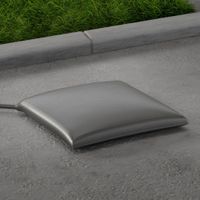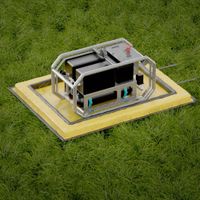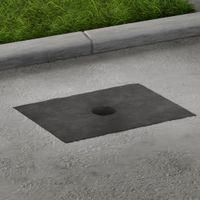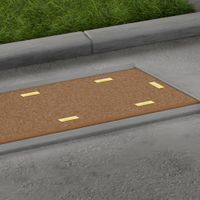Call +(254) 703 030 000 / 751 483 999 / 721 704 777
- Home
- Safety
- Sorbents Spill Control Spill Containment
- Drain Protection Stormwater Filtration
.....Read More
Frequently Asked Questions
What are the best stormwater filtration products for preventing drain clogs?
The best stormwater filtration products for preventing drain clogs include:
1. **Catch Basin Inserts**: These are designed to fit inside storm drains and catch basins, capturing debris, sediment, and pollutants before they enter the drainage system. They are easy to install and maintain, making them a popular choice for urban areas.
2. **Hydrodynamic Separators**: These devices use the principles of gravity and centrifugal force to separate sediments and floatables from stormwater. They are effective in removing larger particles and are often used in conjunction with other filtration systems for enhanced performance.
3. **Permeable Pavements**: While not a direct filtration product, permeable pavements allow water to infiltrate through the surface, reducing runoff and filtering pollutants naturally. They are ideal for parking lots, driveways, and walkways.
4. **Bioretention Systems**: Also known as rain gardens, these systems use soil, plants, and microbes to filter and treat stormwater. They are effective in removing nutrients, metals, and sediments, and can be integrated into landscaping for aesthetic and environmental benefits.
5. **Filter Socks**: These are fabric tubes filled with filter media, placed around storm drains to capture sediment and debris. They are flexible, easy to install, and can be used temporarily during construction or permanently in high-risk areas.
6. **Stormwater Treatment Chambers**: These underground systems use a combination of filtration media and settling chambers to treat stormwater. They are suitable for large-scale applications and can handle high flow rates.
7. **Grate Inlet Skimmers**: These are installed over storm drain grates to capture trash and debris. They are simple to install and maintain, providing an effective first line of defense against clogs.
Selecting the right product depends on specific site conditions, budget, and maintenance capabilities.
How do storm drain cover seals work to protect drains?
Storm drain cover seals work by creating a barrier that prevents pollutants, debris, and hazardous materials from entering the stormwater drainage system. These seals are typically made from durable, flexible materials such as rubber or polyurethane, which can conform to the shape of the drain cover and create a tight seal.
When placed over a storm drain, the seal blocks contaminants from being washed into the drainage system during rain events or accidental spills. This is crucial in preventing pollutants like oils, chemicals, sediments, and trash from reaching natural water bodies, where they can cause environmental harm and water quality issues.
The seals are often used temporarily during construction activities, industrial operations, or in areas prone to spills. They can be quickly deployed in response to an emergency spill or as a preventive measure during maintenance activities. Some seals are designed to be reusable, making them a cost-effective solution for ongoing protection.
In addition to blocking pollutants, storm drain cover seals can also help manage water flow. By controlling the entry of water into the drainage system, they can reduce the risk of flooding and erosion in certain situations.
Overall, storm drain cover seals are an effective tool in stormwater management, helping to protect water quality and comply with environmental regulations by preventing the contamination of stormwater runoff.
What are the benefits of using drain plugs in stormwater management?
Drain plugs in stormwater management offer several benefits:
1. **Flood Prevention**: By temporarily blocking stormwater drains, drain plugs can help manage the flow of water during heavy rainfall, reducing the risk of flooding in urban areas.
2. **Pollution Control**: Drain plugs can prevent pollutants, debris, and hazardous materials from entering the stormwater system, protecting water quality in local waterways and reducing environmental impact.
3. **Maintenance and Repair**: They allow for easier maintenance and repair of stormwater systems by isolating sections of the drainage network, making it safer and more efficient for workers to perform necessary tasks.
4. **Emergency Response**: In the event of a spill or contamination, drain plugs can be quickly deployed to contain hazardous substances, preventing them from spreading through the stormwater system and causing further environmental damage.
5. **Water Conservation**: By controlling the flow of stormwater, drain plugs can facilitate the collection and reuse of rainwater, contributing to water conservation efforts and reducing the demand on municipal water supplies.
6. **Infrastructure Protection**: By managing the volume and speed of stormwater entering the drainage system, drain plugs help protect infrastructure from erosion and damage, extending the lifespan of stormwater facilities.
7. **Cost-Effectiveness**: Implementing drain plugs can be a cost-effective solution for managing stormwater, as they are relatively inexpensive compared to other infrastructure improvements and can reduce the need for costly repairs and upgrades.
8. **Regulatory Compliance**: Using drain plugs can help municipalities and businesses comply with environmental regulations by ensuring that stormwater management practices meet required standards for water quality and flood control.
Overall, drain plugs are a versatile tool in stormwater management, offering multiple benefits that enhance environmental protection, infrastructure resilience, and resource efficiency.
How do filter socks and curb drain filters differ in functionality?
Filter socks and curb drain filters are both stormwater management tools, but they differ in design and functionality.
Filter socks are tubular mesh sleeves filled with filter media such as compost, sand, or gravel. They are placed on the ground, often around construction sites or along roadways, to intercept and filter stormwater runoff. The primary function of filter socks is to trap sediment and pollutants like oil, grease, and heavy metals before they enter the stormwater system. They allow water to pass through while retaining larger particles and contaminants. Filter socks are flexible, easy to install, and can be used on various terrains. They are particularly effective in areas with loose soil or where erosion control is needed.
Curb drain filters, on the other hand, are installed directly in or over storm drain inlets, particularly those located at curbs. They are designed to capture debris, sediment, and pollutants from stormwater as it enters the drainage system. Curb drain filters often consist of a filter fabric or basket that fits into the drain opening, capturing contaminants while allowing water to flow through. They are effective in urban areas where stormwater runoff from streets and sidewalks can carry significant amounts of pollutants. Curb drain filters help prevent clogging of the drainage system and reduce the amount of pollutants reaching natural water bodies.
In summary, while both filter socks and curb drain filters aim to reduce stormwater pollution, filter socks are used primarily for sediment control on the ground, whereas curb drain filters are used to capture pollutants at the point of entry into the stormwater system.
What contaminants can stormwater filter pads and rolls remove?
Stormwater filter pads and rolls are designed to remove a variety of contaminants from stormwater runoff. These include:
1. **Sediments**: They capture suspended solids and particulates, preventing them from entering water bodies and causing turbidity.
2. **Heavy Metals**: Materials like copper, lead, zinc, and cadmium can be trapped by the filter media, reducing their concentration in runoff.
3. **Nutrients**: They can absorb nutrients such as nitrogen and phosphorus, which are often responsible for algal blooms and eutrophication in aquatic systems.
4. **Hydrocarbons**: Oils, greases, and other petroleum-based substances are filtered out, preventing them from polluting water bodies.
5. **Pathogens**: Some filter media can reduce bacteria and other pathogens, improving water quality and reducing health risks.
6. **Trash and Debris**: Larger contaminants like litter and organic debris are physically blocked by the filter structure.
7. **Organic Compounds**: Volatile organic compounds (VOCs) and other organic pollutants can be absorbed or degraded by certain filter materials.
8. **Pesticides and Herbicides**: These chemicals, often present in agricultural runoff, can be captured and degraded by specific filter media.
9. **Dissolved Solids**: Some advanced filters can reduce dissolved solids, improving the overall quality of the water.
These filters are typically made from materials like geotextiles, activated carbon, and other specialized media that enhance their ability to capture and treat various pollutants. The effectiveness of stormwater filter pads and rolls depends on factors such as the type of media used, the flow rate of the water, and the specific contaminants present in the runoff.
How effective are dewatering bags in filtering out sediment and debris?
Dewatering bags are highly effective in filtering out sediment and debris from water, particularly in construction and environmental management applications. These bags are typically made from geotextile materials that allow water to pass through while trapping larger particles such as sand, silt, and debris. The effectiveness of dewatering bags largely depends on several factors, including the type of geotextile used, the size of the bag, the flow rate of the water, and the size of the sediment particles.
The geotextile fabric is designed to have a specific pore size that determines the size of particles it can filter. Smaller pore sizes can capture finer particles, but they may also reduce the flow rate of water through the bag. Conversely, larger pore sizes allow for faster water flow but may not capture smaller sediment particles as effectively. Therefore, selecting the appropriate geotextile material is crucial for optimizing the performance of dewatering bags.
In practice, dewatering bags are effective in reducing turbidity and preventing sediment from entering water bodies, which is essential for compliance with environmental regulations. They are commonly used in situations where water needs to be pumped out of construction sites, dredging operations, or areas affected by flooding. The bags are easy to install and require minimal maintenance, making them a cost-effective solution for sediment control.
However, the effectiveness of dewatering bags can be compromised if they are overloaded or if the flow rate exceeds the bag's capacity. Regular monitoring and maintenance, such as repositioning the bag or replacing it when full, are necessary to ensure optimal performance. Overall, when used correctly, dewatering bags are a reliable method for filtering sediment and debris from water.
What maintenance is required for stormwater filtration products?
Maintenance for stormwater filtration products involves several key tasks to ensure their effective operation and longevity. Regular inspection is crucial, typically on a quarterly basis, to assess the condition of the filtration system and identify any signs of wear or damage. This includes checking for sediment buildup, blockages, or any physical damage to the components.
Cleaning is another essential maintenance task. Sediment and debris can accumulate in the filtration system, reducing its efficiency. Depending on the system's design, this may involve removing and cleaning filter cartridges, screens, or other filtration media. In some cases, backwashing may be required to clear out accumulated materials.
Replacement of filtration media or components is necessary when they become worn or ineffective. This could involve replacing filter cartridges, media bags, or other consumable parts according to the manufacturer's recommendations or when performance declines.
Monitoring the system's performance is also important. This can involve measuring flow rates, checking for proper drainage, and ensuring that the system is effectively removing pollutants from stormwater. Any significant changes in performance may indicate a need for maintenance or repairs.
Documentation of all maintenance activities is recommended to track the system's condition over time and ensure compliance with any regulatory requirements. This includes keeping records of inspections, cleaning, replacements, and any repairs performed.
Finally, it is important to follow the manufacturer's guidelines and any local regulations regarding stormwater management systems. This ensures that the system operates effectively and complies with environmental standards. Regular training for maintenance personnel can also help ensure that they are familiar with the specific requirements of the stormwater filtration products in use.









